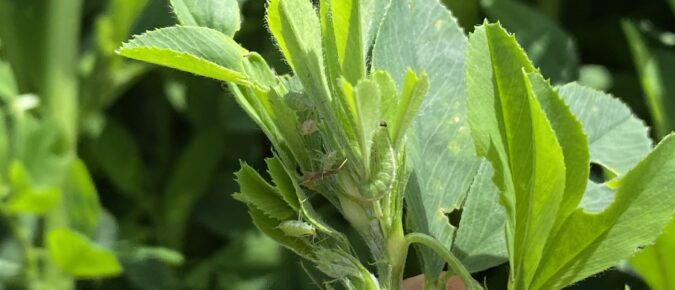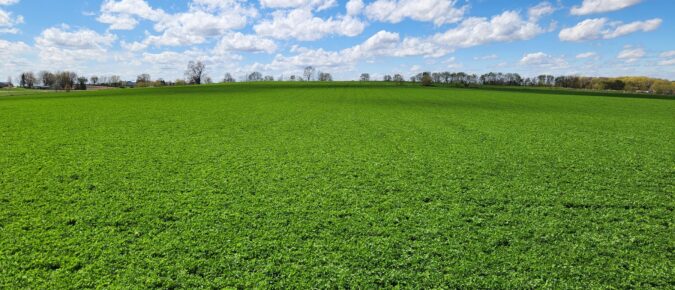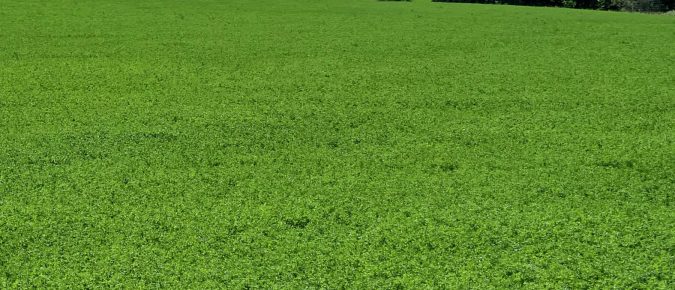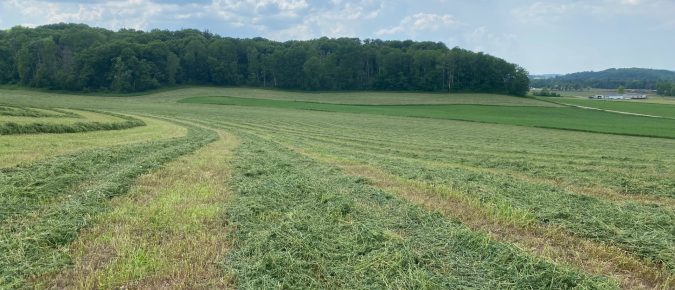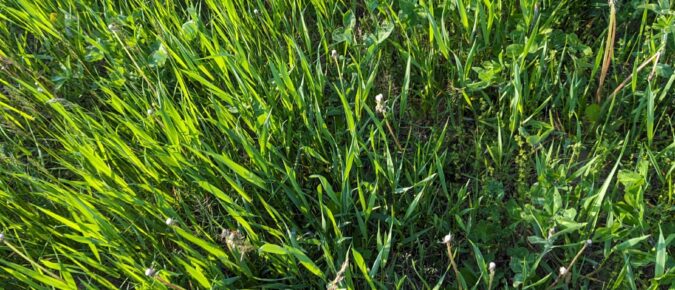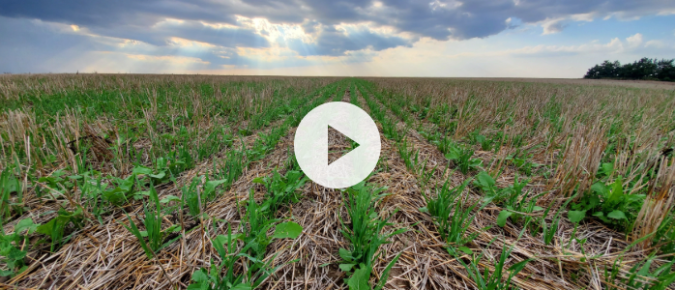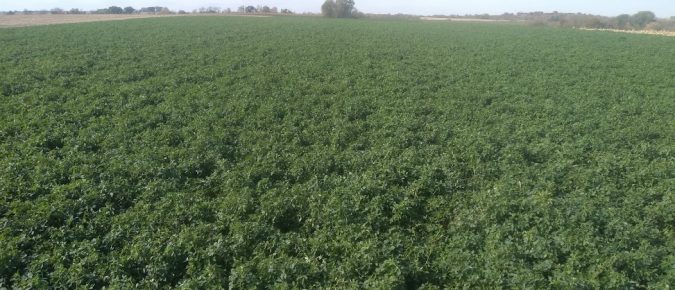Dr. Emily Bick, assistant professor and extension specialist for field and forage pests in the UW–Madison Department of Entomology, provides an update on forage insect pests, focusing on alfalfa weevils, potato leaf hoppers, and slugs.
Kevin Jarek outlines the key factors needed for accurate valuation, including expected dry matter yield, estimated value per ton of dry matter, and harvest costs.
Pricing standing alfalfa requires an open conversation between buyer and seller, with both parties understanding the inherent value of the forage as well as the cost and risks of harvesting.
It’s almost time to scout for early season insect pests in first alfalfa crops. These pests can impact alfalfa crops’ ability to thrive.
The Wisconsin Alfalfa Yield and Persistence Program is designed to provide forage growers, agricultural professionals, researchers, and the forage industry with a unique look at what is happening at the farm level.
There are multiple ways grasses fit into a dairy system from field to bunk, whether seeking overseeding options, more resilience when applying manure, or more biodiversity in in-field ecosystems.
Alfalfa stand quality can (and should!) be evaluated in both spring and fall. Fall evaluations have the advantage of giving us more time to make management decisions for the following growing season, such as fertilizer application, spring herbicide strategies, and crop sequencing. Learn what to look for in this article.
The fourth Focus on Forage webinar in the 2025 series, Focus on the Alfalfa Toolbox, features research-based tools and resources for Wisconsin forage growers.
The first Focus on Forage webinar in the 2025 series, Focus on Alfalfa Companions, features research-based alfalfa establishment resources and new management strategies to keep stands productive over time.
In the September 25, 2024 Badger Crop Connect webinar, Monica Schauer, the UW NOPP Research Director, discussed an ongoing grant program that funds Wisconsin farmers to do on-farm nitrogen application rate research.
Published: Sept. 20, 2024 Cutting alfalfa when the weather is good can be tempting, but late fall cuttings could be damaging to long term alfalfa productivity and stand persistence. Why it might be bad to cut now As a perennial crop, one must manage alfalfa with not just this year but the next year in […]
From various research efforts into the physiology of alfalfa winter survival, it appears that many of these root reserve compounds are positively linked to winter survival, so preserving them can aid our alfalfa stand in surviving winter and thriving the following spring. Manipulating the time of fall cutting allows us to control the stores of these compounds to give the best chance at winter survival of our alfalfa stands.

